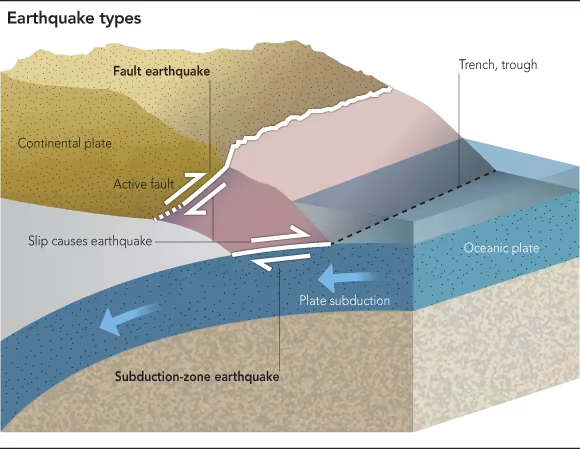Japan is known for its rich culture and cutting-edge technology, but it also stands as one of the most earthquake-prone countries. Each year, Japan experiences over a thousand tremors, making effective earthquake prediction vital for the safety of its people. The race to understand and predict seismic activities has sparked decades of research, but significant challenges remain.
In this post, we will look into the current approaches to earthquake prediction in Japan, the methodologies involved, the obstacles facing researchers, and what the future may hold in this critical field.
The Seismic Landscape of Japan
Japan is situated on the Pacific Ring of Fire, an area marked by significant tectonic activity, including frequent earthquakes. The collision of multiple tectonic plates generates immense stress in the earth’s crust, making precise predictions essential. For instance, the Great East Japan Earthquake in 2011, which measured 9.0 on the Richter scale, is a stark reminder of the destructive potential of seismic events.
Japan’s National Research Institute for Earth Science and Disaster Resilience (NIED) records around 1,500 tremors annually. This makes developing reliable prediction methods a top priority for scientists and policymakers. However, pinpointing the exact time, location, and magnitude of earthquakes remains an unresolved challenge.
Current Methods of Earthquake Prediction
Seismology and Earthquake Early Warning Systems
Seismology is a cornerstone of earthquake prediction. Researchers study seismic waves generated by earthquakes to track patterns and similarities among past events.
Japan’s earthquake early warning systems exemplify this approach, utilizing a network of over 1,000 seismographs. These instruments can detect the initial seismic waves, sending alerts seconds before stronger shaking occurs. In a country where every second counts, research shows these warnings can reduce injuries by up to 40%, emphasizing the value of timely information.

A seismograph measures seismic waves in a lab.
Statistical Models and Historical Data Analysis
Statistical models and historical data analysis represent another essential approach. By examining extensive records, scientists can assess the likelihood of earthquakes in specific areas over defined time frames.
For example, researchers found that the probability of a significant earthquake occurring in the Tokyo area within the next 30 years is nearly 70%. Such statistics help guide emergency preparedness and resource allocation, even though the unpredictable nature of seismic activity complicates these estimates.
Geological Surveys and Fault Line Mapping
Understanding fault lines is crucial in recognizing potential earthquake sites. Geological surveys that use ground-penetrating radar and satellite imagery help scientists map these zones, identifying areas at higher risk.
In a recent study, researchers mapped several hidden fault lines in the Kanto region, which had previously gone unnoticed. This type of analysis helps enhance risk assessments, but it still cannot predict exactly when an earthquake will occur.

Fault lines running through a mountainous region in Japan.
The Challenges of Earthquake Prediction
Data Limitations and Technological Constraints
The quest for accurate earthquake prediction faces challenges related to data collection and analysis. Real-time data dissemination is often lacking, hindering the understanding of complex seismic interactions.
Research indicates that much of Japan’s high-tech instrumentation is limited to regional coverage, making it hard to achieve a comprehensive understanding of seismic activity nationwide. The need for a robust data-sharing infrastructure poses logistical and financial challenges for researchers.
The Unpredictability of Seismic Events
The unpredictability of earthquakes remains one of the significant hurdles in this field. Some faults exhibit clear patterns, while others do not show recognizable behaviors at all.
This unpredictability can create skepticism about the reliability of prediction models. It underscores the importance of ongoing research to further our understanding of these complex natural phenomena.
Public Awareness and Preparedness
Public engagement is a pivotal aspect of effective earthquake prediction. While researchers develop new technologies, educating communities about risks and preparedness strategies is essential.
In Japan, government initiatives have successfully raised public awareness. Campaigns that encourage building practices to enhance structural resilience are critical. Approximately 90% of the population now knows basic earthquake preparedness tips, which helps increase community resilience even without exact predictions.
Future Directions in Earthquake Prediction
Integration of Artificial Intelligence
Artificial intelligence (AI) shows promise for enhancing earthquake prediction capabilities. AI can analyze complex datasets, identifying patterns that may evade human researchers.
Machine learning algorithms could help refine statistical models and improve early warning systems. For instance, researchers are exploring the use of AI to analyze social media data for public sentiment and seismic activity trends.
International Collaboration
In a globalized world, collaboration across countries is vital for seismic research. By sharing knowledge, data, and research initiatives, countries can collaborate to improve understanding and prediction techniques.
Countries such as the United States and Chile, both with extensive seismic experience, are partnering with Japan to develop shared predictive technologies and preparedness programs, enhancing collective safety measures against earthquakes.
Insights for a Safer Future
The journey toward accurate earthquake prediction in Japan remains a challenging yet evolving adventure. As scientists explore new technologies and strategies, the integration of advanced methodologies, data sharing, and global cooperation is crucial.
While we may not yet have the ability to predict earthquakes with pinpoint accuracy, ongoing research provides hope for progress. Equipping the population with knowledge and preparedness measures strengthens resilience against the unpredictable threat of earthquakes, transforming fear into a proactive and informed community approach.
With continued dedication to research and public engagement, the future of earthquake prediction in Japan holds promise, turning uncertainties into manageable risks for society.
